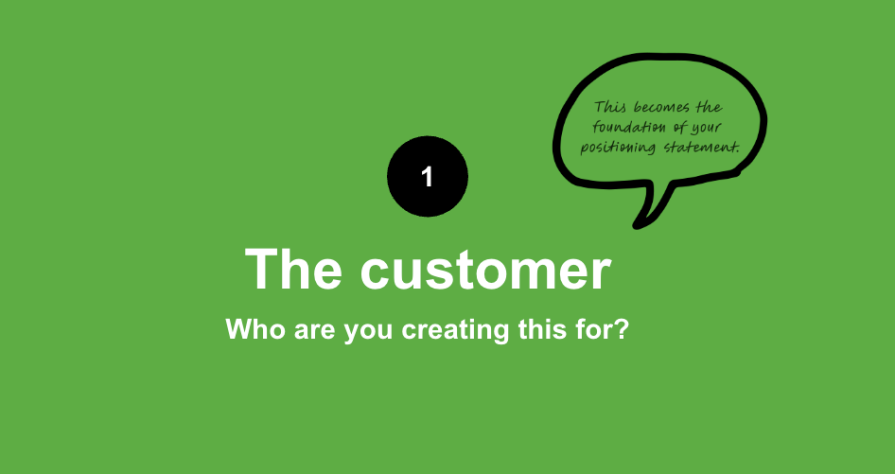Understanding your users is crucial in the competitive world of marketing and software products.

Yet, in a recent project, I discovered a critical misalignment between our internal positioning and the reality of our customers’ needs. Despite a robust user base, our messaging and feature prioritization fell short, leaving us disconnected from what truly mattered to our audience. The repercussions were big, and our efforts were ineffective.
On another project, our outdated positioning statement led to fragmented efforts across teams. The marketing team honed in on one set of customer challenges, while distribution chased after different visions of our customer base, and the product team prioritized another user problem. The result? Chaos and inefficiency reigned, with no internal guidelines to steer us toward success.
This experience underscored the vital importance of a clear positioning statement. It’s the map and compass that navigates every aspect of your product, brand, and marketing strategy, ensuring alignment and focus across teams. Without it, you risk drifting aimlessly, unable to capture the hearts and minds of your target market.
A positioning statement summarizes your product and how it fulfills the target audience’s needs. It defines how your product fits in the marketplace and how you better solve your customers’ problems than competitors.
You use a positioning statement internally. A positioning statement clarifies for the internal team who the customer is and what problem your business aims to solve. It’s not a description of the product or its features, but about creating an internal understanding of why a product or feature is built.
A positioning statement should also guide your team to help customers find and choose your product over the competition. It connects what was built with why it was built, rippling through the product and marketing decisions to reach the target customer.
Now, let’s get down to business. How do you create your positioning statement? It is simple — you define and combine a couple of items, and then, voila!
Many frameworks and templates suggest how to do it, and it comes down to defining these four items for your product or new feature:
Who are you creating this for? You can begin by identifying and defining your target audience or customer. This becomes the foundation of your positioning statement.
How:
A saying goes that if you cater to everybody, you’re catering to nobody. You must be explicit and specific about who will benefit. Being specific here will be invaluable in your product and marketing messaging. I’ve felt the pain of not being specific. Then, everyone focuses on different targets, or the messaging becomes diluted because you don’t want to exclude anyone.
Let’s define the customer’s needs and the friction you want to solve. What are their challenges, pains, needs, desires, and motivations? These insights will help you define your product.
How:
What is currently available to help this customer and their pain point? Identify key competitors, their products for the customer, and their pain points. This enables you to carve a unique position for your product within the market landscape.
How:
Now that you know the customer, define your solution. How are you addressing their pain point? Turn the customer’s pain into something they can gain. What job could the customer “hire” your product to do? This will form the basis of your positioning statement, which will help customers grasp why your product is preferable to other alternatives.
How:
To help make the process of writing a positioning statement easier, you can follow this template:

Here are some examples of positioning statements for communication products broken down by the four items discussed above:
As you get started working on your positioning statement, consider the following tips:
A positioning statement clearly defines the problem the product solves, ensuring alignment across teams to deliver effective marketing to the right audience.
It provides the internal team with a map to clarify what they’re building for and why. A positioning statement becomes the compass that guides product, marketing, and business decisions and bridges the product and the target audience, communicating a clear motivation for choosing this product over alternatives. Lastly, as more users adopt and use your product, it becomes the wind in your sails.
With a powerful positioning statement, you can confidently navigate the market and chart a course toward success.
Featured image source: IconScout

LogRocket identifies friction points in the user experience so you can make informed decisions about product and design changes that must happen to hit your goals.
With LogRocket, you can understand the scope of the issues affecting your product and prioritize the changes that need to be made. LogRocket simplifies workflows by allowing Engineering, Product, UX, and Design teams to work from the same data as you, eliminating any confusion about what needs to be done.
Get your teams on the same page — try LogRocket today.

A practical guide for PMs who want to stop being bottlenecks, delegate smarter, and lead teams effectively with a clear ownership framework.

Stop letting unreliable data block features. Treat data as inventory to track quality, ownership, and ship with confidence.

Learn why slide decks slow teams down and explore better tools like whiteboards, PRDs, and prototypes to improve collaboration and alignment.

AI PM roles are evolving fast. Learn the five types of AI PMs, the skills they need, and how they shape AI products across industries.